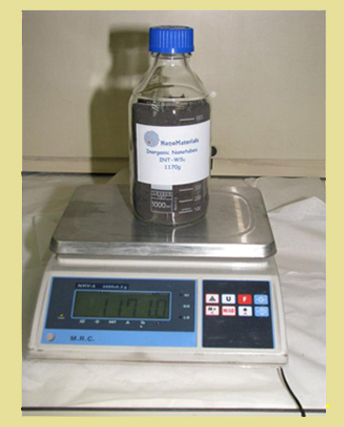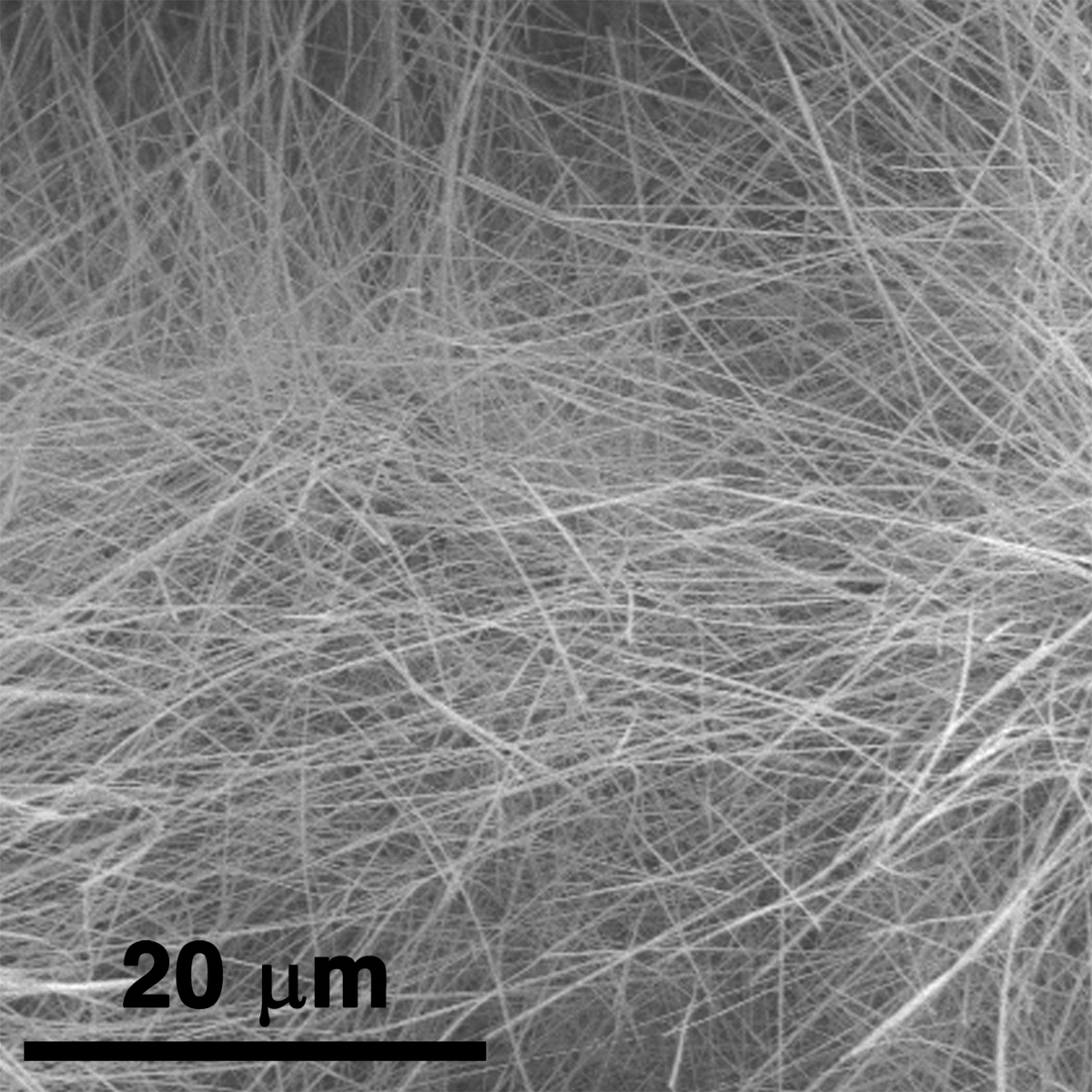a. Scaling-up the WS2 nanotubes synthesis: Successful scale-up efforts in “NanoMaterials” have led also to the synthesis of macroscopic amounts of WS2 nanotubes (see No. 241, 257, 262 and Fig. 17). This development offers numerous prospective for research and development of products based on these inorganic nanotubes. In particular, polymer nanocomposites reinforced with such nanotubes have shown outstanding mechanical; thermal and tribological properties, offering them numerous applications.


Fig.17. a. Bottle containing 1.2 kg pure WS2 nanotubes; b. SEM of an assortment of WS2 nanotubes produced en-mass. Courtesy of Prof. A. Zak, Holon Institute of Technology. See references 241 and 262.
b. Doping of the IF/INT with extrinsic atoms: Substitutional doping of semiconductors with different kinds of atoms is one of the hallmarks of contemporary solid-state chemistry; physics and the electronic industry. In this context, the recent success of our lab with substitutional doping (ReMo) of IF-MoS2 nanoparticles and INT-WS2 is very rewarding (No. 266 and 267). Rhenium doping of the IF/INT NP in the range of 100 ppm was shown to induce negative charge on the nanoparticles’ surface, making them self-repelling. Thus stable suspensions of the doped nanoparticles were prepared as well as reduced electrical resistivity of such nanoparticles. Most distinctly, a substantial reduction in friction was observed for lubricating fluids formulated with small amounts of the doped nanoparticles. Fig. 18 shows the results of a large series of experiments were the normalized force, which overcomes the adhesion and friction of a metallic lead retracted from a soft ring, was measured. This experiment simulates the retrieval of an endoscope from a constriction in the human body. A factor of three reduction in the normalized force, compared to the present technology, was obtained by adding the Re-doped IF-MoS2 nanoparticles to the medical gel (No. 302 and 308). These experiments and others are indicative of the substantial potential of the doped IF nanoparticles in medical technologies. Various recent works (see for example No. 256 and 309) suggested that the IF nanoparticles are non-toxic advocating their safe use in different medical technologies.

Fig. 18. Normalized retraction force for endoscope retrieved from a narrow constriction imitating urological procedure. Gel mixtures containing different kinds of solid lubricant particles were tested. Each point represents a normalized value, compared to the pure medical gel (Esracain). Note the significant reduction in the retraction force of the endoscope using the rhenium doped IF-MoS2 nanoparticles as additive to the medical gel (0.5-1 wt%). See reference No. 302.
c. Core-shell nanotubes: The hollow core of the WS2 nanotubes as well as their outer surfaces was used as a template for the synthesis of new core-shell nanotubes. Collaborating with Prof. M.L.S. Green’s group in Oxford University, the layered compound lead iodide was melted in the presence of the WS2 nanotubes. The molten lead iodide salt was sucked into the hollow core of the nanotubes by capillary forces and wetted their inner surface. Upon cooling, the receding salt left a PbI2@WS2 core-shell nanotube behind (No. 238 and Fig. 19). In this strategy, different core-shell nanotubes were prepared. In another strategy, gas phase reaction between MoCl5 and H2S in the presence of the WS2 nanotubes, resulted in MoS2@WS2@MoS2 superstructure nanotubes.
 Fig. 19. Model rendering of a core-shell PbI2@WS2 nanotube superimposed on the TEM image of such nanotube. The model drawing is courtesy of Prof. J. Sloan, Warwick University, UK. See No. 238.
Fig. 19. Model rendering of a core-shell PbI2@WS2 nanotube superimposed on the TEM image of such nanotube. The model drawing is courtesy of Prof. J. Sloan, Warwick University, UK. See No. 238.


